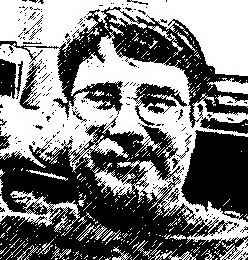Why do I do this to myself?
So for my new-to-me Kato locomotives that I finally got all put together*, I decided to go with the good old XL Systems sound decoder. Why? Because I decided for some reason I wanted sound, the XL Systems decoders are about as low priced as you can get for sound decoders, and since I picked a pair of custom painted shells they weren't going to match up with any other railroad, so it didn't really matter if they would run with anything else.
I have written about XL systems decoders before, but to recap, they are a horrible decoder with fantastic packaging arrangements. They used to make MRC decoders (and maybe they still do, MRC only has 3 and they all look very similar to the XL systems decoders with the same numbers), and to date MRC/XL Systems decoders are the only functional decoders I have ever thrown away.
The fantastic packaging arrangement is the inclusion of the speakers on the board, so they are true drop-in decoders. The new Kato decoder (1960B) has a cubic speaker that really sounds good, but the round speakers on the plain 1960 board is more than acceptable. They come pre-programmed with different horns, bells and prime movers to choose from, but unfortunately they have not seen fit to publish a table that tells you what setting is for what sounds. But that's not what makes them horrible. What makes them horrible is their speed table programming.
At speed step 1 the sounds notch up but the locomotive does not run. Well, one of the decoders I ordered for the Katos was defective, so when I sent it back for repair I asked about it. It turns out that CV2 (start speed for you non-DCC folks) has to be programmed at an insanely high level. XL says to start at 100 (which is at or above where you would normally program CV5 for top speed in any other decoder) and go from there.
There is also a kick function in CV65 (this is supposed to spike the voltage to get the loco to move slowly) that doesn't seem to have any effect. They also do not creep like Katos are capable of. With a TCS decoder, for example, the Kato diesels will crawl at 0.1 scale MPH, but with the XL decoder the slowest I could get the loco to consistently move was about 5 scale MPH.
Setting the start speed so high also makes setting the top speed impossible. Try as I might, I couldn't get CV5 to slow the top speed down below about 175 or so; with the TCS (or Digitrax, or NCE) decoder the speeds can be scaled down to more reasonable prototypical speeds (I normally program mine to 50 in the middle and 100 at the top so that they roughly correspond with throttle percentage settings). At CV5=255 the loco zips along at a scale 350 MPH, but even if CV5 is set to zero (normally this doesn't work, with any other decoder brand the minimum CV5 setting has to be above CV2) the loco still runs exceptionally fast.
So I now have two Kato sound equipped locomotives with custom paint that run exceptionally fast that I can run together at the train shows. They should work out well there because train show trains at actual prototypical speeds of 65 scale MPH bores the onlookers, they really do look way too slow on the large layouts.
*I actually swapped out one of the new chassis for one that I had because the trucks and tank were black on one and UP gray on the other. I put the Chicago & Northwestern shell on the black trucked frame and used the chassis from one of my Union Pacific dash 9's (which I have more than plenty of) for the second custom painted locomotive. I used the UP's non-sound decoder on the CNW loco so it will run with the rest of them and put the XL sound decoder in the ex-UP chassis with the custom painted shell. That way my custom locomotives match, and I have a really cool CNW locomotive.





